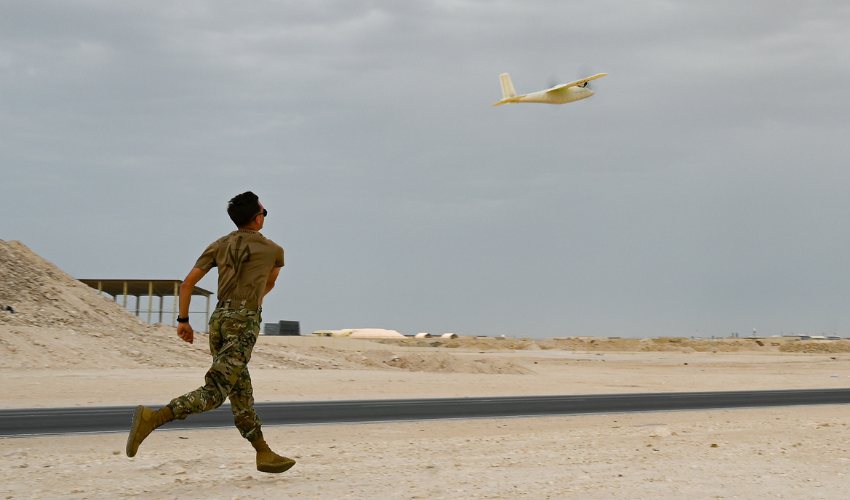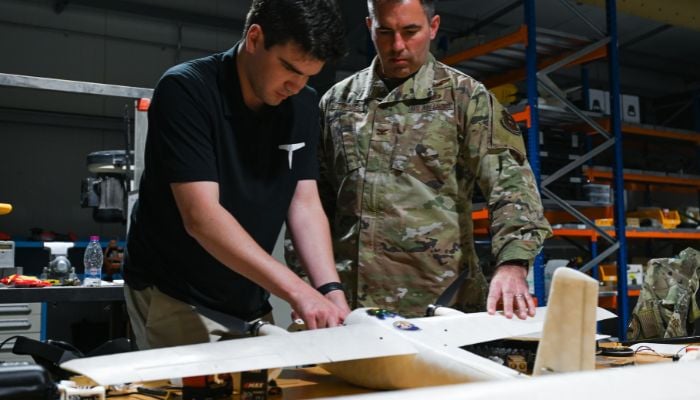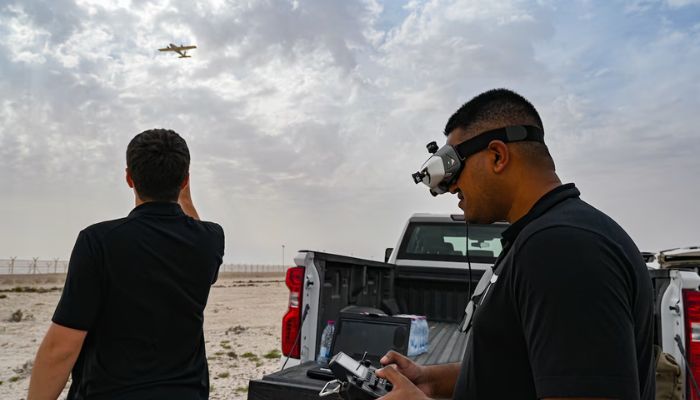Task Force-99 Unveils 3D Printed Drone for Battlefield Aid

In the rugged, harsh terrains of combat zones, traditional means of delivering aid often fall short, posing a significant risk of severe injury and death. Amidst this challenge, U.S. Air Forces Central engineers believe they have found a lifesaving solution within additive manufacturing technology.
Task Force-99, alongside the Air Force’s Blue Horizon program and California’s Titan Dynamics, has unveiled a revolutionary unmanned aerial system (UAS) that promises to redefine the speed and efficiency of drone deployment. By leveraging advanced software capable of conceptualizing and 3D printing airframes within hours rather than days, they aim to revolutionize drone manufacturing and distribution for allied forces worldwide, and reduce the risk associated with aerial support on the battlefield.

Col. Dustin Thomas, a Fellow with Blue Horizons and a key member of Project Black Phoenix, explained the project’s objectives, stating, “The goal of our project was to be able to quickly design a fixed wing small UAS within minutes, build it within hours, be able to employ it in the same day, and do that in the field right at the point of need.”
The seeds of this innovation were planted in early February this year when TF-99, Blue Horizons, and Titan Dynamics collaborated on a project that traditionally demanded a week of engineering efforts. However, by integrating Titan Dynamics’ 3D printing software, they managed to reduce that time to just minutes.
Through the use of additive manufacturing, TF-99 has been able to drastically reduce production costs by up to 95%. By employing lightweight, cost-effective synthetic plastic, they’ve bypassed the expenses associated with traditional metal and carbon fiber components, paving the way for a more economical future in military drone technology.
Though still in alpha development, the software boasts impressive versatility. Users simply input their mission needs – weight, size, range, and speed – and the software designs a small airframe perfectly suited to the requirements. This allows for on-demand 3D printing at the push of a button, drastically reducing lead times when time is crucial. Lt. Col. Peter Dyrud, a Fellow with Blue Horizons, emphasized its adaptability, explaining, “We are creating a system that adapts aircraft to the effect you want to employ. We want to provide a system that puts in the warfighters’ hands the ability to create and really do something unique and specific to their mission.”

Operation of the 3D printed UAS.
Following the initial flight assessment, TF-99 swiftly tested a second UAS, customized for different mission parameters, in under 48 hours. This time, the drone successfully delivered a simulated first-aid package over 30 miles to its designated destination, showcasing the agility and efficacy of rapid customization and deployment enabled through 3D printing.
This approach holds profound implications for combat scenarios, particularly in supporting hard-to-reach, injured service members. However, as this innovation is expected to alter the landscape of ground and aerial warfare, its uses can extend beyond combat to improve military operations as a whole. At the moment, TF-99 has expressed leveraging the software for a variety of military applications, from intelligence and surveillance to communication and beyond. To learn more about this project, click here.
What do you think of this project by Task Force-99? Let us know in a comment below or on our LinkedIn, Facebook, and Twitter pages! Don’t forget to sign up for our free weekly newsletter here for the latest 3D printing news straight to your inbox! You can also find all our videos on our YouTube channel.
*All Photo Credits: United States Air Forces Central






